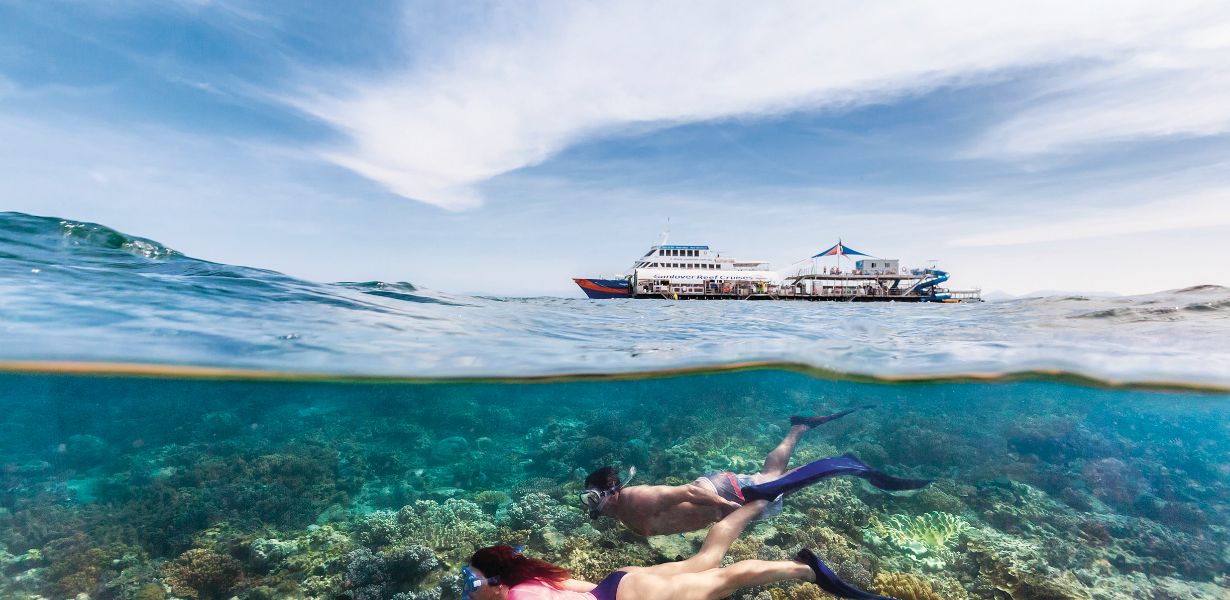
The Great Barrier Reef stands as one of nature’s most awe-inspiring masterpieces, an underwater wonderland that captures the imagination of those who glimpse its vibrant beauty. Spanning over 2,300 kilometers off the coast of Queensland, Australia, this coral wonderland is a captivating blend of biodiversity, stunning hues, and ecological importance. Let’s embark on a journey to unravel the mysteries of the Great Barrier Reef, delving into its breathtaking allure and profound significance.
Exploring the Great Barrier Reef: An Introduction
Nestled beneath the glistening waters of the Coral Sea, the Great Barrier Reef is a living testament to the splendor of marine life and the intricate workings of Earth’s ecosystems. It’s not just a reef; it’s a bustling city of marine organisms coexisting in perfect harmony. This natural wonder is a fusion of coral formations, aquatic fauna, and crystal-clear waters that beckon adventurers and researchers alike to unveil its secrets.
Great Barrier Reef Facts: A Glimpse into its Majesty
Size Matters:
Stretching an impressive 2,300 kilometers, the Great Barrier Reef is the world’s largest coral reef system.
Diverse Life:
It hosts a staggering array of marine species, including over 1,500 fish species and 400 coral species.
Visible from Space:
So immense it’s visible from space, this remarkable reef system is truly a natural marvel.
Heritage Status:
Designated a UNESCO World Heritage site in 1981, the Great Barrier Reef holds both cultural and ecological significance.
A Reef of Resplendent Colors: The Beauty Within
The Great Barrier Reef is a kaleidoscope of vibrant colors, painting an underwater canvas that captivates all who encounter it. The coral formations span a spectrum of reds, blues, and greens, while the fish that call it home dazzle with their iridescent hues. These colors aren’t just for show; they play a crucial role in the reef’s complex ecosystem, aiding in camouflage, communication, and even survival.
Location and Geography: Where to Find this Aquatic Treasure
The Great Barrier Reef isn’t just a singular entity; it’s an intricate tapestry of reefs, islands, and cays. Extending from the tip of Cape York in the north to the coastal town of Bundaberg in the south, this sprawling ecosystem is a vital part of Australia’s identity. Its diverse locations offer something for everyone, from snorkelers exploring shallow waters to deep-sea divers discovering hidden depths.
Ecosystem Harmony: Delicate Balance in an Underwater Realm
The Great Barrier Reef is a testament to the delicate dance between species and environment. The coral polyps, responsible for constructing the reef’s limestone skeleton, thrive in the nutrient-rich waters, while countless fish species find shelter and sustenance among its crevices. This ecosystem balance is essential for maintaining the reef’s health and resilience in the face of changing environmental factors.
Great Barrier Reef Under Threat: Navigating Challenges
As guardians of this ecological treasure, we face the responsibility of preserving it for future generations. Climate change, pollution, and overfishing pose significant threats to the Great Barrier Reef’s delicate equilibrium. Corals are vulnerable to rising sea temperatures, leading to coral bleaching events that devastate entire sections of the reef. Mitigating these challenges demands international cooperation and a commitment to sustainable practices.
Conservation Efforts: Pledging to Protect
Efforts to safeguard the Great Barrier Reef are widespread and multifaceted. Marine protected areas, research initiatives, and sustainable tourism practices all contribute to its preservation. The Australian government and various organizations collaborate to combat pollution, regulate fishing, and raise awareness about the reef’s vulnerability.
Unveiling the Future: A Promise of Restoration
Despite the challenges, hope for the Great Barrier Reef’s future shines brightly. Scientists and conservationists are pioneering groundbreaking techniques like coral gardening and assisted evolution to enhance the reef’s resilience. These efforts inspire a renewed sense of dedication to the reef’s survival and inspire us to rethink our relationship with the natural world.
Final Words
The Great Barrier Reef isn’t just a destination; it’s an embodiment of nature’s ingenuity. Its vibrant corals, diverse marine life, and awe-inspiring expanses serve as a reminder of the interconnectedness of all life on Earth. By understanding, appreciating, and preserving this remarkable reef, we honor not only its majesty but also the profound significance of biodiversity and the urgent need for responsible stewardship.
Commonly Asked Questions
Q1: What is the main threat to the Great Barrier Reef?
A: Climate change, particularly rising sea temperatures causing coral bleaching, poses the most significant threat to the reef’s health.
Q2: Can you swim near the coral formations?
A: Yes, but it’s essential to practice responsible snorkeling and diving to avoid damaging the delicate coral structures.
Q3: How can I contribute to the reef’s preservation?
A: Supporting sustainable tourism, reducing carbon footprint, and advocating for reef protection are meaningful ways to help.
Q4: Are there guided tours to explore the Great Barrier Reef?
A: Absolutely, various tour operators offer guided experiences that allow you to explore the reef’s beauty while adhering to conservation principles.
Q5: What is coral bleaching, and can it be reversed?
A: Coral bleaching occurs when stressed corals expel the symbiotic algae living in their tissues, turning them white. While some recovery is possible, reversing bleaching entirely is challenging and requires improved reef conditions.





